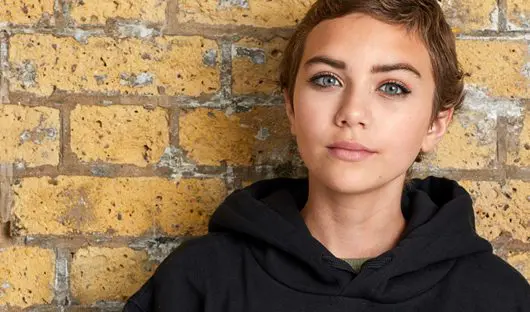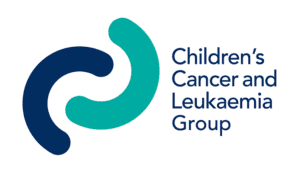Osteosarcoma
Osteosarcoma is a type of bone cancer. About 30 children in the UK develop osteosarcomas each year. These tumours occur more commonly in older children and teenagers and are very rarely seen in children under five.
Osteosarcoma often starts at the end of the long bones, where new bone tissue forms as a child or young person grows. Any bone in the body can be affected, but the most common sites are in the arms and legs, particularly around the knee and shoulder joints.
There are several different types of osteosarcoma. Most occur in the centre of the bone. There are also rare subtypes, such as parosteal, periosteal, telangiectatic, and small cell osteosarcoma.
Causes
There has been a lot of research into the causes of osteosarcoma but, like most childhood cancers, a definite cause is unknown. There are a few risk factors that have been associated with osteosarcoma.
Children who have hereditary retinoblastoma (a rare tumour of the eye) have an increased risk of developing osteosarcoma. Children who have previously had radiotherapy and chemotherapy also have an increased risk of developing osteosarcoma. It is not caused by injuries or damage to the bone, although an injury may draw attention to a bone tumour.
Signs and symptoms
Pain in the affected bone is the most common symptom. This pain may initially come and go, and then gradually become more severe and constant especially at night. There may also be swelling around the affected bone.
Osteosarcoma is sometimes discovered when a bone that has been weakened by cancer breaks after the person has had a minor fall or accident. Some patients may develop a limp if the tumour is in the leg or pelvis.
These symptoms can be caused by many things other than cancer. However, any persistent bone pain should be checked by your child’s doctor. Symptoms are often attributed to a sporting injury.
How osteosarcoma is diagnosed
Usually you begin by seeing your family doctor (GP), who will do an examination and may arrange tests or x-rays. Many of the specific tests for diagnosing bone tumours require experience and specialist techniques so if a bone tumour is suspected, the doctor will refer you directly to a specialist hospital or bone tumour centre for further tests.
The doctor at the hospital will take a full medical history. They will then do a physical examination. This will include an examination of the painful bone to check for any swelling or tenderness, and will probably involve a blood test to check general health.
A variety of tests and investigations may be needed to diagnose osteosarcoma. An x-ray of the painful part of the bone will usually identify a tumour, although sometimes they can be difficult to see.
A small piece of the tumour will be removed and looked at under a microscope. This is called a biopsy. It’s a small operation, performed under a general anaesthetic.
Other tests are done to check whether the cancer has spread to other parts of the body. These include a chest x-ray, blood tests, a bone scan and an ‘MRI’ or ‘CT’ scan.
Any tests and investigations that are needed will be explained to you.
Grading
Grading refers to the appearance of the cancer cells under the microscope, and gives an idea of how quickly the cancer may develop. Low-grade cancer cells are usually slow-growing and less likely to spread.
In high-grade tumours the cells are likely to grow quickly and are more likely to spread.
Most osteosarcomas are high-grade, but a type known as parosteal osteosarcoma is usually low-grade.
Staging
The ‘stage’ of a cancer is a term used to describe its size and whether it has spread beyond its original site. Knowing the particular type and stage of the cancer helps the doctors to decide on the most appropriate treatment.
Most patients are grouped depending on whether cancer is found in only one part of the body (localised disease), or whether the cancer has spread from one part of the body to another (metastatic disease).
A staging system commonly used for osteosarcomas is described below:
- Stage 1A – the cancer is low-grade and is only found within the hard coating of the bone
- Stage 1B – the cancer is low-grade, extending outside the bone and into the soft tissue spaces that contain nerves and blood vessels
- Stage 2A – the cancer is high-grade and is completely contained within the hard coating of the bone
- Stage 2B – the cancer is high-grade and has spread outside the bone and into surrounding soft tissue spaces that contain nerves and blood vessels. Most osteosarcomas are stage 2B
- Stage 3 – The cancer can be low or high-grade and is either found within the bone or extends outside the bone. The cancer has spread to other parts of the body, or to other bones not directly connected to the bone where the tumour started.
If the cancer comes back after initial treatment, this is known as recurrent or relapsed cancer.
Treatment
Treatment will depend on a number of factors including the size, position, and stage of the tumour.
Chemotherapy
Chemotherapy is a very important part of treatment for osteosarcoma. Chemotherapy uses anti-cancer (cytotoxic) drugs to destroy cancer cells, and is usually given to shrink the main tumour before surgery. It’s also given after the tumour has been removed by surgery, to help reduce the risk of the cancer coming back (recurring). It’s common for a combination of drugs to be used.
Find out more about chemotherapy.
Radiotherapy
Radiotherapy may occasionally be given. This treats cancer by using high energy rays to destroy the cancer cells, while doing as little harm as possible to normal cells.
Find out more about radiotherapy.
Surgery
The type and extent of surgery depends on the position and size of the tumour in the body. This surgery will need to be carried out at a specialist orthopaedic centre, and your child should be referred to one.
Surgery may include removing the whole limb (amputation) or part of the affected bone, which is then replaced by some form of false limb (prosthesis). If only part of the affected bone is removed, this is known as limb-sparing surgery. Most children will be considered for limb-sparing surgery
Amputation
Sometimes amputation of the limb is unavoidable if the cancer is affecting the surrounding blood vessels and nerves.
After amputation, a false limb will be fitted and will be regularly adjusted as needed. False limbs can work very well. It should be possible to join in with normal activities and even sports.
Limb-sparing surgery
There are two ways that limb-sparing surgery may be done:
- replacing the bone with a prosthesis (a specially designed artificial part)
- replacing the affected bone with bone taken from another part of the body (bone graft).
After this type of surgery, children and young people will usually be able to use their limbs almost normally. However, they are advised not to participate in any contact sports. This is because any damage to the bone graft or prosthesis may require another major operation to repair or replace it.
If children are growing, the limb prosthesis will need to be lengthened as the bone grows. This may mean there are extra short stays in hospital, although some prostheses can be lengthened as an outpatient procedure.
Biological therapy
Mifamurtide, also called Mepact®, is a type of biological therapy treatment. It may be offered to your child if they have had a surgical resection to remove the osteosarcoma and the tumour has not spread. It will be given along with chemotherapy after surgery to try and stop the osteosarcoma coming back.
Mifamurtide is a relatively new drug and so more research needs to be done to fully understand its side effects and how to use it best.
Follow-up care
Many children and young people with osteosarcoma are cured. However, surgery may be needed to lengthen the affected limb. You will have regular check-ups and x-rays in the paediatric or adolescent oncology clinic, and at the orthopaedic centre.
If you have specific concerns about the condition and treatment, it is best to discuss them with your doctor, who knows the situation in detail.
This information was written by the Children’s Cancer and Leukaemia Group (CCLG)
You may also like
I have cancer
Your go-to place for everything you might need when you've been diagnosed with cancer.
I have cancer
My child has cancer
If you're a parent or carer of a child diagnosed with cancer, get the right help and advice for us to support you.
My child has cancer
Join our Facebook groups
Meet others with similar experiences, share your views and have your voice heard.
Join our groups
